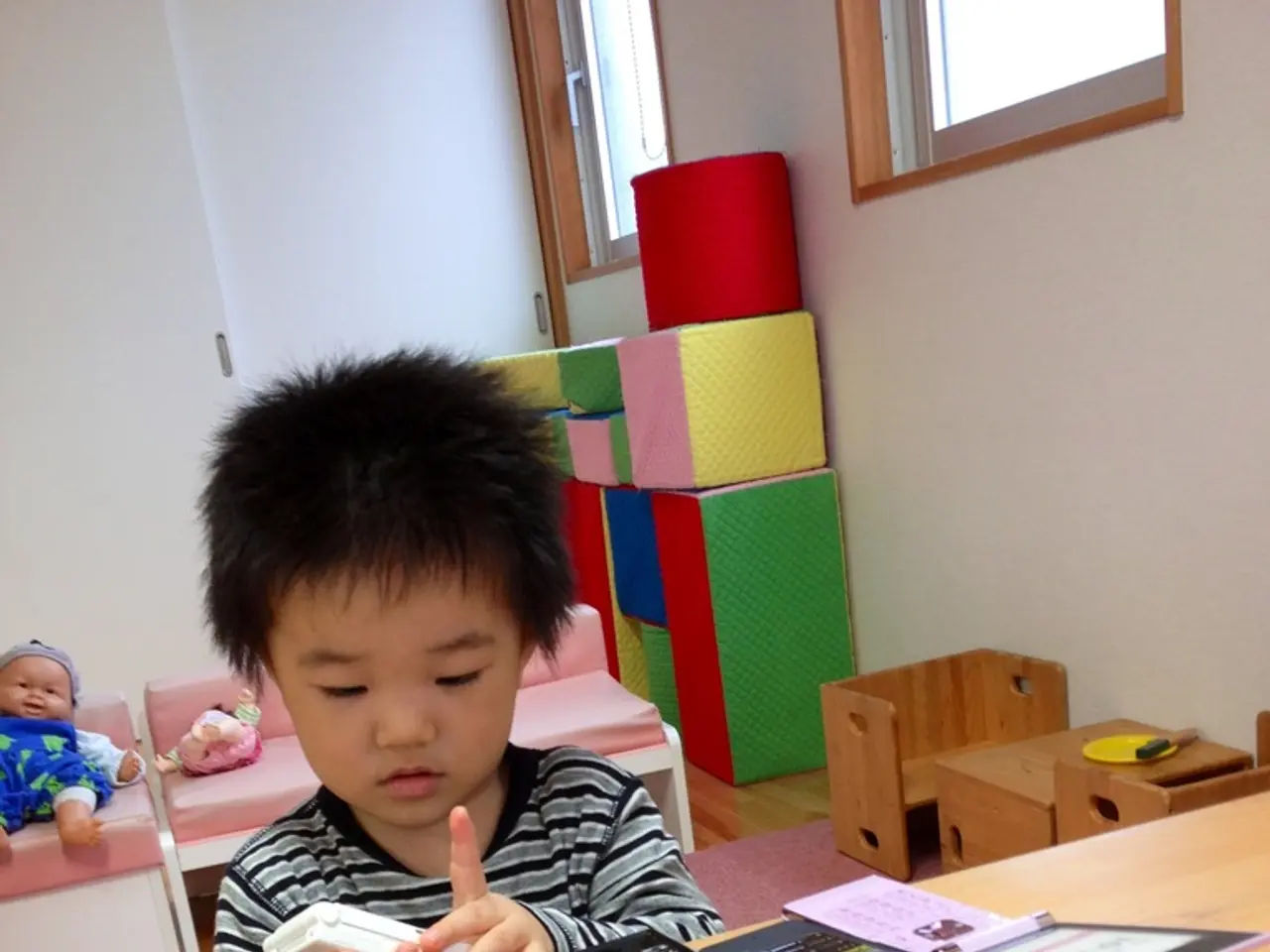Strategy for Controlling Children's Digital Device Usage
In today's digital age, screen time has become an integral part of a child's life. However, it's crucial to strike a balance and manage screen time effectively. Engaging with what a child is doing on their screen can create common ground and offer enriching learning activities, but treating screen time as a privilege rather than a necessity can help reduce its impact on a child's life.
Beyond encouraging various hobbies, there are several fun and supportive ways to reduce a child's screen time. Establishing predictable routines with transition time, creating screen-free zones at home, involving children in simple chores to build responsibility, and promoting outdoor play and family board games are all effective strategies. These approaches foster engagement, reduce conflicts around screen use, and help children develop balanced daily routines [1][2][3][4].
For instance, starting a simple after-school outside ritual such as a 20-minute walk can help transition children away from screens smoothly and improve mood [2]. Designating areas like the dining table or bedrooms as screen-free encourages face-to-face interaction and develops healthier screen habits [3][4]. Using visible timers to set clear limits on screen duration helps children understand boundaries calmly [3].
Involving children in household tasks such as watering plants or cooking reduces idle screen time while teaching life skills [3]. Promoting mindful discussions about phone use and modeling healthy screen habits as adults further supports reducing screen dependence [4]. Additionally, arranging interactive playdates and planning family outings provide stimulating alternatives that build social skills and create lasting memories without screens [1][3].
These strategies work best when implemented gradually and consistently. They help children develop emotional regulation alongside reduced screen exposure [1][2]. It's essential to remember that many schools and workplaces rely on computers and laptops for education, so balance is key. Children should have a good level of digital literacy without relying too much on screen time.
Parental controls can be used to set specific time limits on a child's device to ensure screen time doesn't exceed what is set. Apps like Apple Screen Time and 'Forest' can help manage screen time effectively. Visiting the local library can help children find engaging material without screens.
Openly communicating with children about screen time and its effects can help foster a healthy relationship with technology. Signs of excessive screen time may include interference with family activities, sleep, and snacking during screen time. Encouraging children to have hobbies can help reduce screen time and teach valuable life skills.
Lastly, it's important to lead by example. Families can lead by example, use screen time management apps, do screen-based activities together, set parental controls, and establish a bedtime routine. Starting to limit screen time at a young age can make it easier to maintain as children get older.
One school that encourages students to spend time away from screens is St Peter's Prep, which offers opportunities for outdoor activities and interactive classrooms. Booking an open day at St Peter's Prep can provide more information about their educational prospects and opportunities as a flexi boarding school.
Screen time can benefit children by providing opportunities for research, creativity, and connecting with loved ones who live far away. However, excessive screen time can interfere with family relationships, a child's mood, focus, sleep routine, and physical activity. By implementing these strategies, we can help our children lead balanced, healthy lives in the digital age.
[1] [Bernard, M. (2020). "The Benefits of Family Board Games for Child Development". Psychology Today.] [2] [Ginsburg, K. R., & Kremen, L. (2016). "The Importance of Play in Promoting Healthy Child Development and Maintaining Strong Parent-Child Bonds". Pediatrics, 138(4), e20162593.] [3] [Kabali-Kabange, E., & Mudambi, R. (2019). "The Effects of Screen Time on Children's Health and Development". Children, 6(2), 43.] [4] [Orben, A., & Przybylski, A. K. (2019). "Associations Between Parent-Reported Screen Time and Child Well-Being: A Systematic Review and Meta-Analysis". Pediatrics, 144(6), e2019047943.]
Engaging in a forest school lifestyle, where children spend time learning and playing in a natural environment, can help reduce their screen time and foster a connection with the outdoors [1]. Encouraging family board games and home-and-garden activities can also help create a healthier lifestyle for the whole family, improving relationships and promoting better family dynamics [2].








